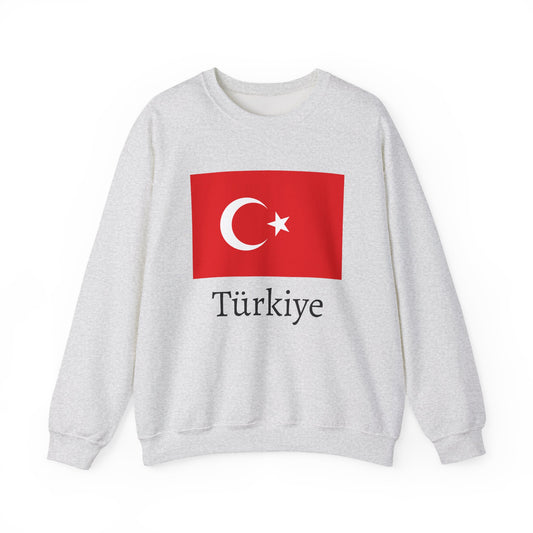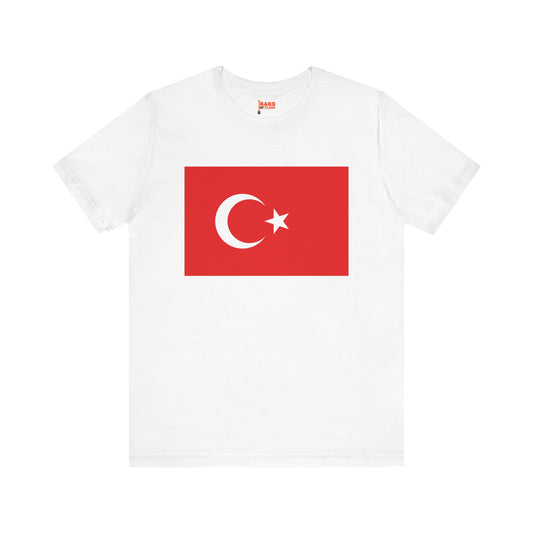-
Turkey Sweatshirt
Regular price $34.15 USDRegular priceUnit price / per -
Turkey Inspired Sweatshirt
Regular price $34.15 USDRegular priceUnit price / per -
Türkiye Sweatshirt
Regular price $34.15 USDRegular priceUnit price / per -
Turkey Flag Sweatshirt
Regular price $34.15 USDRegular priceUnit price / per -
Turkey Pillow
Regular price $22.65 USDRegular priceUnit price / per -
Turkey Backpack
Regular price $59.79 USDRegular priceUnit price / per -
Turkey Leather Patch Hat
Regular price $18.85 USDRegular priceUnit price / per -
Turkey Mug
Regular price $11.65 USDRegular priceUnit price / per -
Turkey Trucker Cap
Regular price $14.90 USDRegular priceUnit price / per -
Türkiye Hoodies
Regular price $34.40 USDRegular priceUnit price / per -
Türkiye T-shirts
Regular price $22.79 USDRegular priceUnit price / per -
Turkey Inspired Hoodies
Regular price $34.40 USDRegular priceUnit price / per -
Turkey Hoodies
Regular price $34.40 USDRegular priceUnit price / per -
Turkey T-shirts
Regular price $22.79 USDRegular priceUnit price / per -
Turkey Flag Hoodies
Regular price $34.40 USDRegular priceUnit price / per -
Turkey Inspired T-shirt
Regular price $22.79 USDRegular priceUnit price / per -
Turkey Flag on T-shirt
Regular price $22.79 USDRegular priceUnit price / per
Collection: Turkey
The Turkish flag, also known as the flag of Turkey, is a symbol of national pride and identity for the Turkish people. We will explore the history, symbolism, and protocols associated with the Turkey flag.
Overview of the Turkey Flag Design and Colors

The design of the Turkish flag is simple yet profoundly symbolic, featuring a vibrant red backdrop paired with a distinctive white star and crescent at its center. The choice of red as the primary color has deep historical significance, echoing the courage and sacrifices of the nation's forebears. This bold hue serves as a memorial to the past and a beacon of the nation’s resilience and courage. In contrast, the white star and crescent are not merely decorative elements but embody Turkey's spiritual and cultural heritage.
These symbols, deeply embedded in the country’s Islamic traditions, are a testament to the nation’s identity and enduring values. The stark contrast between the red field and the white emblem creates a striking visual representation of Turkey's rich history and aspirations for the future. This carefully chosen palette and design ensure that the Turkish flag is instantly recognizable and holds a revered place in the hearts of the Turkish people.
Historical Context of the Turkey Flag
The journey of the Turkish flag to its current design has been interwoven with the nation's history, marked by pivotal moments and gradual evolution. The star and crescent, symbolic of Turkey's rich heritage, have roots stretching back to the late Ottoman Empire. Initially, various Ottoman flags featured the crescent and star. Still, it was not until the 19th century that these symbols were standardized on a red background, reflecting the emergence of a distinct national identity. The Republic of Turkey, established in 1923, retained the red flag with the white star and crescent to continue this legacy. The definitive adoption on June 5, 1936, came when the newly formed republic sought symbols to unify its diverse populace under a single banner, reinforcing the national consciousness.
Profound transformations characterized this era as Turkey began modernization and secularization. The flag, thus, symbolized not only the nation's past struggles for independence but also its forward-looking aspirations. Its adoption is closely linked with the republic's founding principles and the abolition of the Ottoman sultanate, serving as a visual representation of Turkey's sovereignty and its break from the past. The enduring design of the flag since 1936 reflects a period of stabilization and establishing a cohesive national identity, making it a pivotal chapter in the country's ongoing narrative.
Symbolism Behind the Turkey Flag

The Turkish flag's vibrant red and stark white are imbued with profound meanings that resonate deeply within the Turkish national consciousness. The red field is a powerful reminder of the blood shed by the martyrs and warriors who fought for Turkey's independence and sovereignty. This color choice is a tribute to their ultimate sacrifice and a symbol of the courage and resilience that define the Turkish spirit. The white star and crescent are more than mere adornments; they are symbols deeply rooted in Turkey's cultural and religious tapestry.
The crescent moon, an ancient emblem of Islam, reflects the country's longstanding connection to the Islamic faith. At the same time, the star is often interpreted as a symbol of enlightenment, guiding the nation towards progress and unity. Together, these elements form a compelling narrative of struggle, faith, and aspiration, encapsulating the essence of the Turkish identity and the unbreakable bond between the nation's past and its hopes for the future. The flag’s design, therefore, is a visual encapsulation of Turkey's heritage, embodying the values and principles that continue to guide the nation forward.
Current Relevance of the Turkey Flag
In today's Turkey, the flag is more than just a national emblem; it is an omnipresent symbol of patriotism and national identity. It adorns buildings, squares, and classrooms, constantly reminding the country of unity and resilience. During national holidays like Republic Day and Victory Day, the flag takes center stage in celebrations and parades, reinforcing its significance in the collective memory of the Turkish people. The military also holds the flag in high esteem, prominently featuring it in ceremonies and on uniforms, symbolizing the armed forces' dedication to protecting the nation's sovereignty. Despite its revered status, the flag occasionally finds itself at the center of political debates and discussions, reflecting the diverse perspectives within Turkish society. These discussions often revolve around issues of secularism, nationalism, and Turkey's role in the wider world, demonstrating the flag's role as a living symbol that engages with the challenges and aspirations of contemporary Turkey. Its presence in everyday life and pivotal national moments underscores its enduring relevance as a source of pride and a focal point for dialogue about the country's future.
Additional Facts and Protocols Related to the Turkey Flag
The Turkish flag is treated with utmost respect and care, following established protocols to maintain its dignity. When displayed, it must always be in pristine condition, symbolizing the honor and integrity of the nation. The flag should be prominently positioned alongside other flags and must only be flown in a dimly lit area if it is properly illuminated, ensuring its visibility at all times. The flag is flown at half-mast during national mourning as a sign of respect and sorrow.
Additionally, on specific commemorative days, the flag is displayed to honor the occasion's significance. When being raised or lowered, observers should face the flag and pay respect, which often includes standing at attention, removing hats, and placing the right hand over the heart. These protocols not only underscore the reverence held for the flag but also reflect the collective pride and unity of the Turkish people. By adhering to these guidelines, individuals participate in a longstanding tradition of honoring the nation's history, values, and aspirations.


































